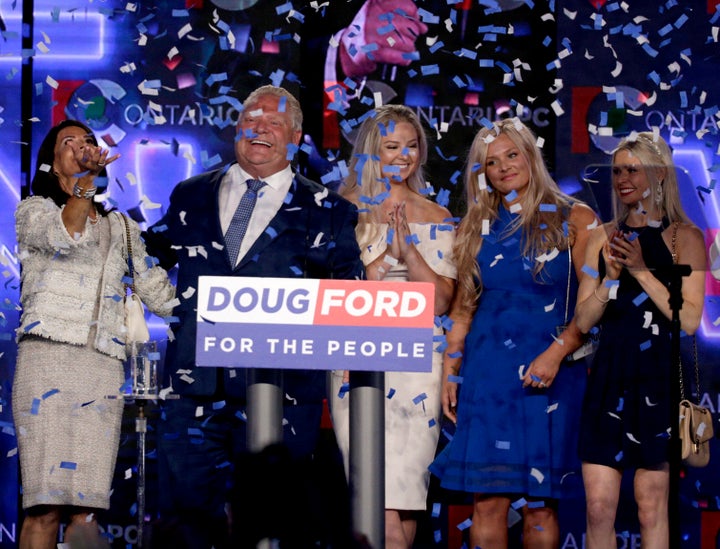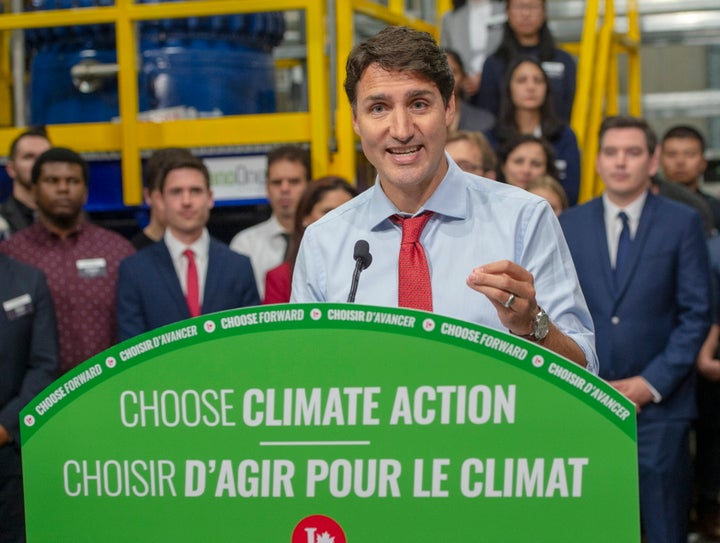Sometimes, elections are about a desire for change. Any change will do. This desire can become the monolithic driver of voter behaviour. It can have very little to do with policy, or even personality.
The thing about former Ontario Premier Kathleen Wynne, who was supplanted by Ontario Progressive Conservative Party leader Doug Ford, is that many voters liked her policies, but didn’t like her or her party. The Ontario Liberals had stagnated over their decade and a half in power and were low in the polls. Voters decided to switch it up.
A similar story unfolded in Ottawa in 2015, when Liberal Party leader Justin Trudeau swept into power. Desire for change was climbing steadily leading up to the campaign, nine years into Harper’s rule. The kind of change we got was a bit of a surprise to many (perhaps most to Thomas Mulcair), but it was, yet again, a desire for change that set the stage for Trudeaumania 2.0.
“Depending on how you frame the choice, the edge lies with a different camp.”
In anticipation of an election, we will talk a lot about “issue framing” or “a ballot question.” “Is it time for a change?” or “Can you stand another four years of Kathleen Wynne?” are examples of ballot questions. A ballot question is how political parties want to present the overarching choice in an election. The thinking goes, if a political party can establish the right question to voters — and it’s a question on which they have the edge — they’ll win. It’s a way to think about what the election is about, and political parties, media and pundits all play a role in shaping what it is.
A popular one employed by America’s first TV celebrity president, Ronald Raegan, was: “Are you better off today than you were four years ago?” The resounding answer was “NO!”, and the rest was history.
In the case of Ontario, the ballot question Ford’s team encouraged was – “Can we take four more years of tired, corrupt elite Liberal rule wasting your money?” “No, of course not.” “Has 15 years been too long?” “Yes, way too long.” Unfortunately for the Liberals, the question at the centre of their media blitz — “Can we afford a Doug Ford government?” — didn’t quite take.

Let’s look at the current federal election. Months ago, one could describe the framing of the Liberal government’s electoral proposition as: “Can we afford not to confront climate change?” “Great question! No, we maybe can’t.” The Conservatives, as they so often do, went with: “Can you afford four more years of a government making life more unaffordable for you?” “Maybe not.”
As you can see, depending on how you frame the choice, the edge lies with a different camp. But first you need to work really hard to establish what the election is about. Is the election about climate change? The Liberals seem committed to that. Who will tighten the purse strings and lower taxes? Probably the Conservative Party.
Asking the right question
At some point this election, we stumbled into a social policy values war. From corruption, climate and cost of living, we pivoted to abortions and gay marriage. These issues aren’t always actively part of the policy debate, but were trotted out to contrast Liberal versus Conservative values. How did they come up? A Liberal cabinet minister from Andrew Scheer’s home province thought it would be a useful reminder.
“What could be impactful about this incident isn’t the matter itself, but how it shaped the ballot question.”
To further drive a wedge, Liberal messaging on its part did its best to associate Scheer with Doug Ford, a “slash-everything” conservative whose passion for austerity has weakened the social safety net that makes Canada great (or so they’d say). Likely, the Liberals’ intention here is to pose the question: “Do we want to have a Trump Lite, or Ford Lite, at 24 Sussex?
In recent weeks, a new ballot question emerged courtesy of an old private school yearbook. We speak, of course, of blackface. Everyone has been following the story. It’s gone international. While the general consensus is that Trudeau’s past actions were truly bad and thoughtless, initial surveying suggests the scandal had a modest impact, if any. When the team at Abacus Data asked Canadians if they were truly offended and now had a changed view of Trudeau, 24 per cent said they were truly offended, 34 per cent didn’t like it (but believed he apologized appropriately), and 42 per cent say it didn’t bother them really.
Longtime observers of politics could have told you exactly who made up the 24 per cent of offended voters. Any guesses? If you said “Conservatives,” you’d be right. Fully 63 per cent of Conservative voters and six per cent of current Liberal voters claimed offence.

To dig into the issue, we isolated respondents that self-identified as visible minorities. They were as unlikely to be offended by the incident as anyone else. They were most likely to say they didn’t like it, but believed in the prime minister’s contrition. Perhaps, based on the prime minister’s record on diversity, they were more willing to forgive and forget. Perhaps they were more concerned about other issues to care.
What could be impactful about this incident isn’t the matter itself, but how it shaped the ballot question. For about a week, the national conversation explored: “Is Justin Trudeau who he says he is?” This favoured the Liberals’ opponents, who could additionally point to the SNC-Lavalin affair as an example of Trudeau’s wavering progressive bona fides. This particular scandal likewise had a minimal impact on vote intention, but helped cultivate a story about a leader who can be framed as a fraud on the values of diversity, belonging and inclusion — all elements he’d built his brand around. But if the ballot question that breaks through the noise became: “Who will defend our pluralistic society against ‘Trump North’?” the answer could be Justin Trudeau.
The ballot question is still very much up in the air, as the Liberals’ crisis subsides (for now). As election day nears, pay close attention to how media and parties alike frame the choice, either directly or subtly. With the debate stage opening or closing remarks, observe what choices and trade-offs the leaders are suggesting exist. They’ll be trying to define a ballot question in your mind about what the election is really about. The broadest consensus on what that question is will define who has the edge on October 21.
Have an opinion you’d like to share on HuffPost Canada? You can find more information here on how to pitch and contact us.
Also on HuffPost: